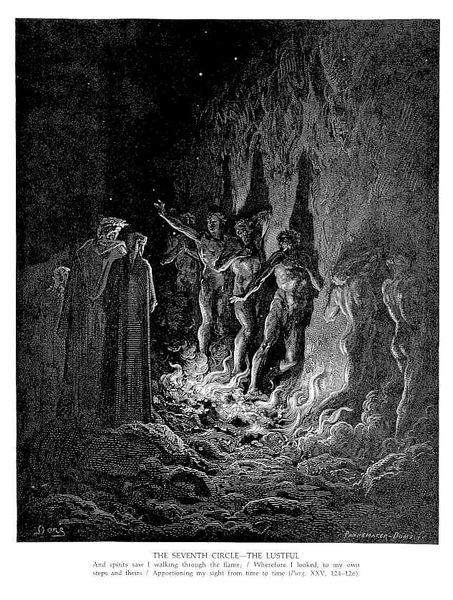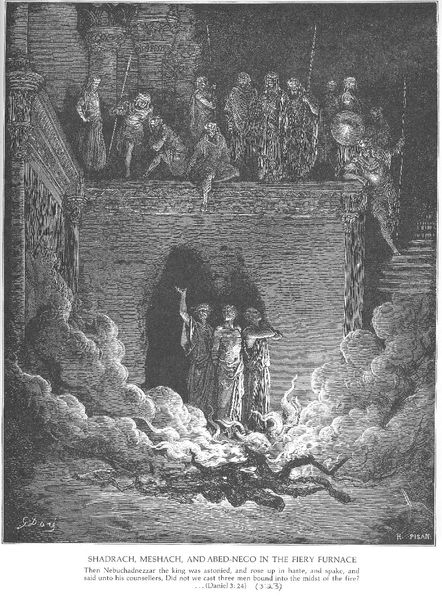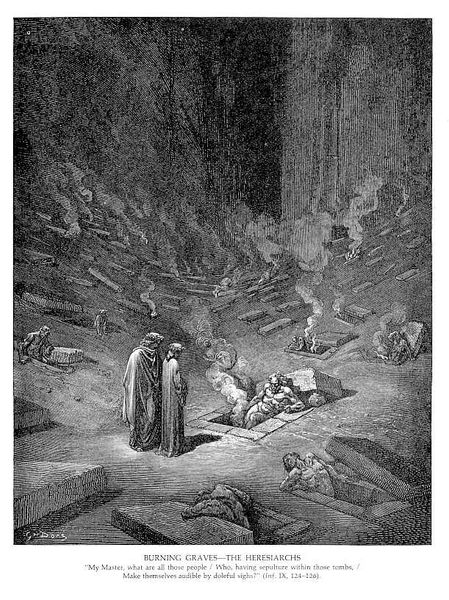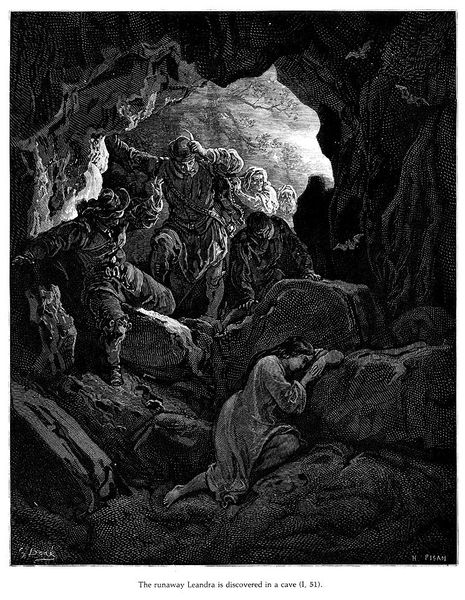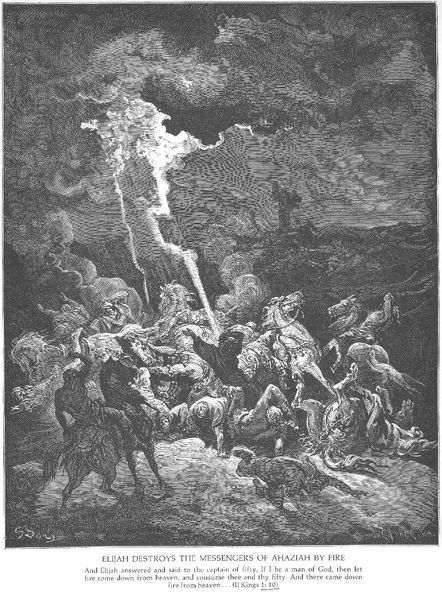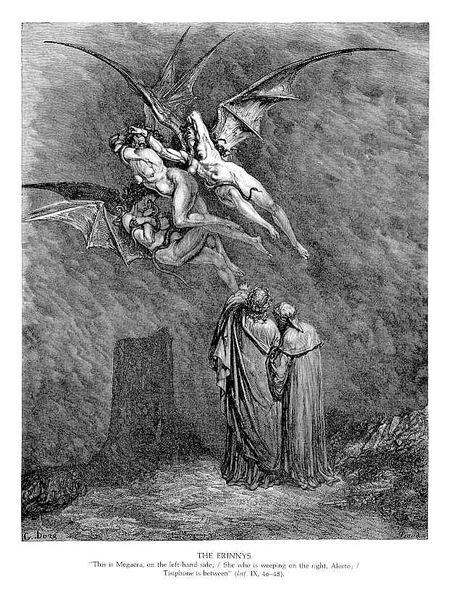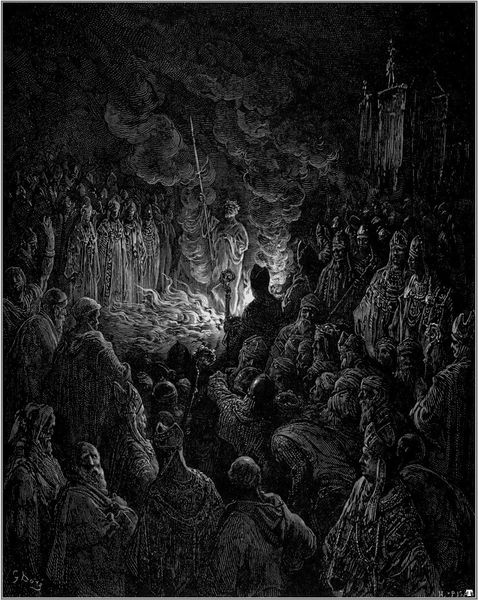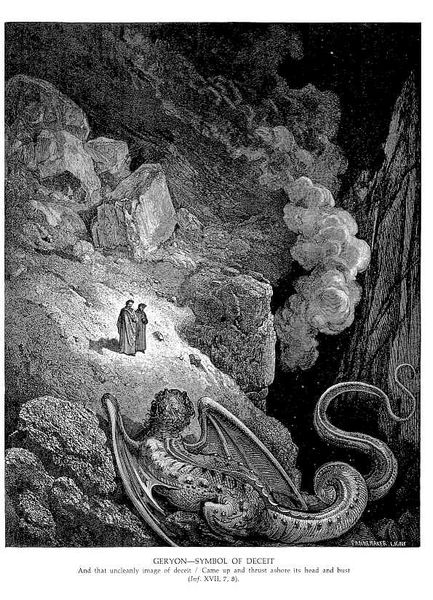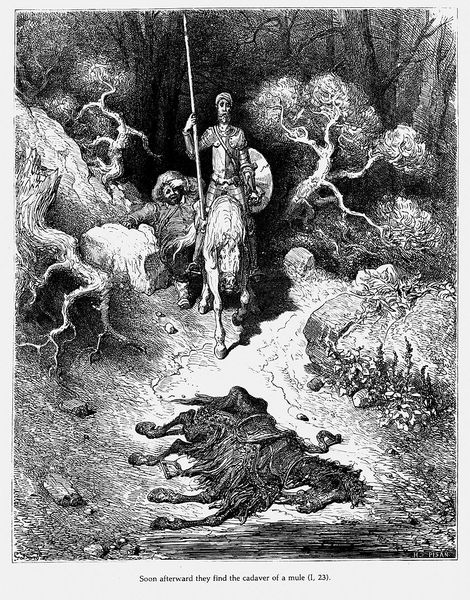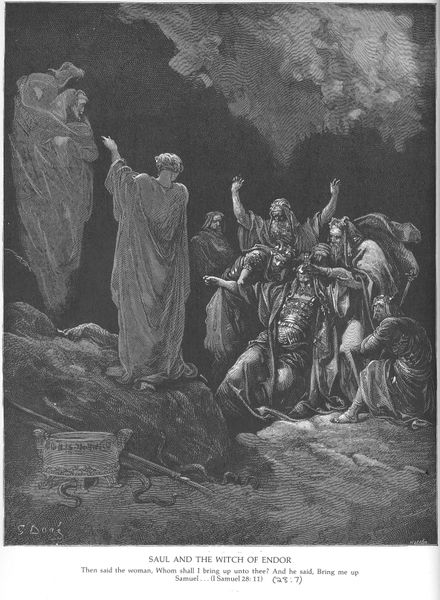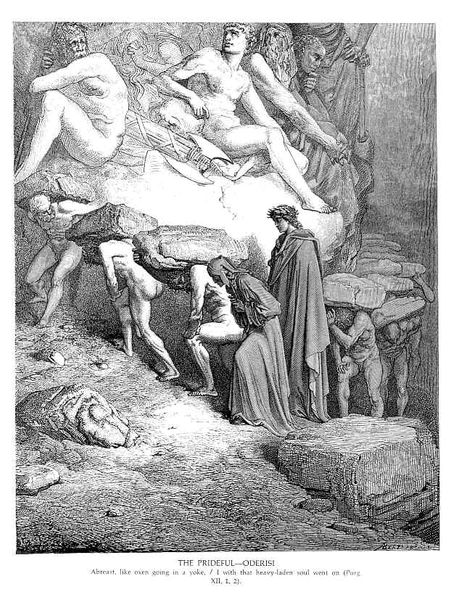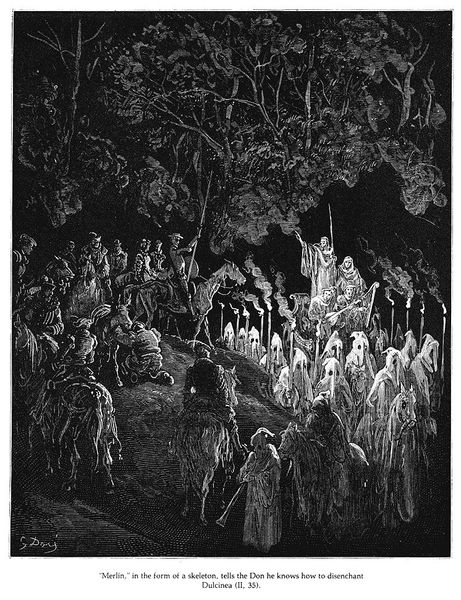
drawing, print, photography, ink, engraving
#
drawing
#
narrative-art
# print
#
landscape
#
figuration
#
photography
#
ink
#
romanticism
#
engraving
Copyright: Public domain
Curator: This drawing, a monochrome rendering attributed to Gustave Doré and entitled “Don Quixote,” possesses a captivating theatricality. I'm immediately struck by the sharp contrast and how the composition seems to bubble up from the lower portion, enveloping everything. Editor: Absolutely. Doré, as an artist operating in 19th-century France, faced an artistic landscape marked by political instability and shifting social values, contexts ripe for the satire embedded in the adventures of Don Quixote. He has definitely captured it here. The landscape in this narrative feels equally inhabited by darkness and light. It's all-consuming. Curator: It feels as if light emanates less from a source and more from within the figures themselves, almost like an awakening dream or remembrance. A crackling fire in the center of the goatherds who've gathered 'round the Don... Their expressions! Are they bemused or genuinely intrigued by his tall tale? Doré has staged them just perfectly to capture a sense of the performative. Editor: Doré’s work should be contextualized with his interest in class and power. It's as if Doré intentionally positions his viewers, like the goatherds, on the outside. Sancho, notably, seems to mimic the goatherds, sitting low with a curious but doubtful posture, maybe suggesting a form of complicity or performative witnessing of madness from below. Curator: I love that—viewing this through a lens of performative madness. But let's give the knight his due! With gauntleted hands raised to the heavens as though channeling an otherworldly power, he’s quite captivating, if completely out of touch. Do you see the hints of the romantic hero he casts himself as, battling injustice and fighting windmills? Editor: The image functions, then, as a commentary on societal delusions of grandeur, on the role of class in sustaining narratives that obfuscate truth. Don Quixote’s fantasy life allows a subtle but devastating critique of Romantic ideals against the backdrop of real-world inequalities. The drawing suggests that even well-intentioned pursuits, when divorced from tangible reality, serve little purpose. Curator: You know, perhaps in today’s social and political arena, we still could benefit from a collective willingness to tilt at some windmills now and again. Maybe in a good way? Editor: It seems Doré created here, consciously or unconsciously, a complex snapshot that makes this “Don Quixote” particularly resonant and necessary in our current social discourse. Curator: Absolutely! And Doré's ability to imbue ink and paper with such theatrical dynamism—that's its own form of brave madness too, isn’t it?
Comments
No comments
Be the first to comment and join the conversation on the ultimate creative platform.
